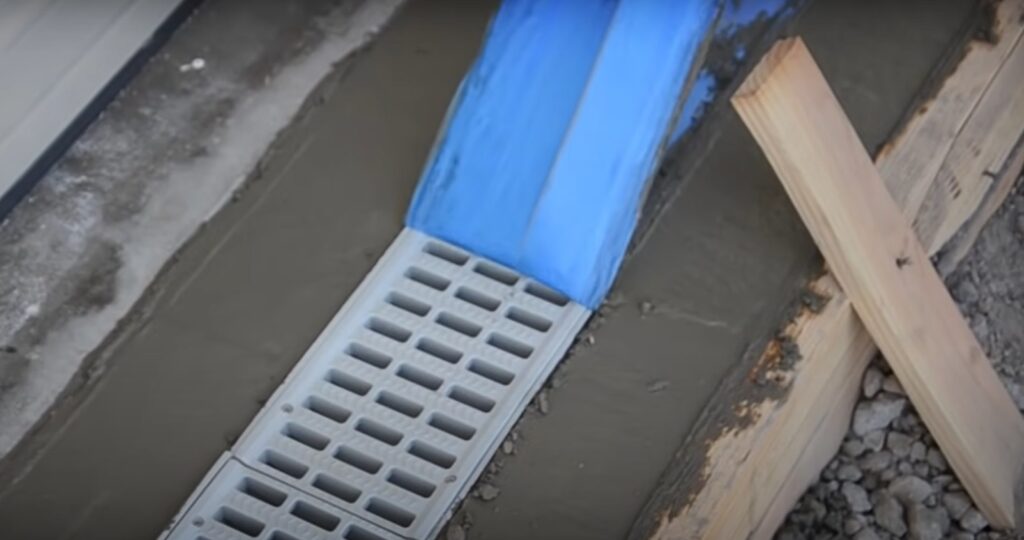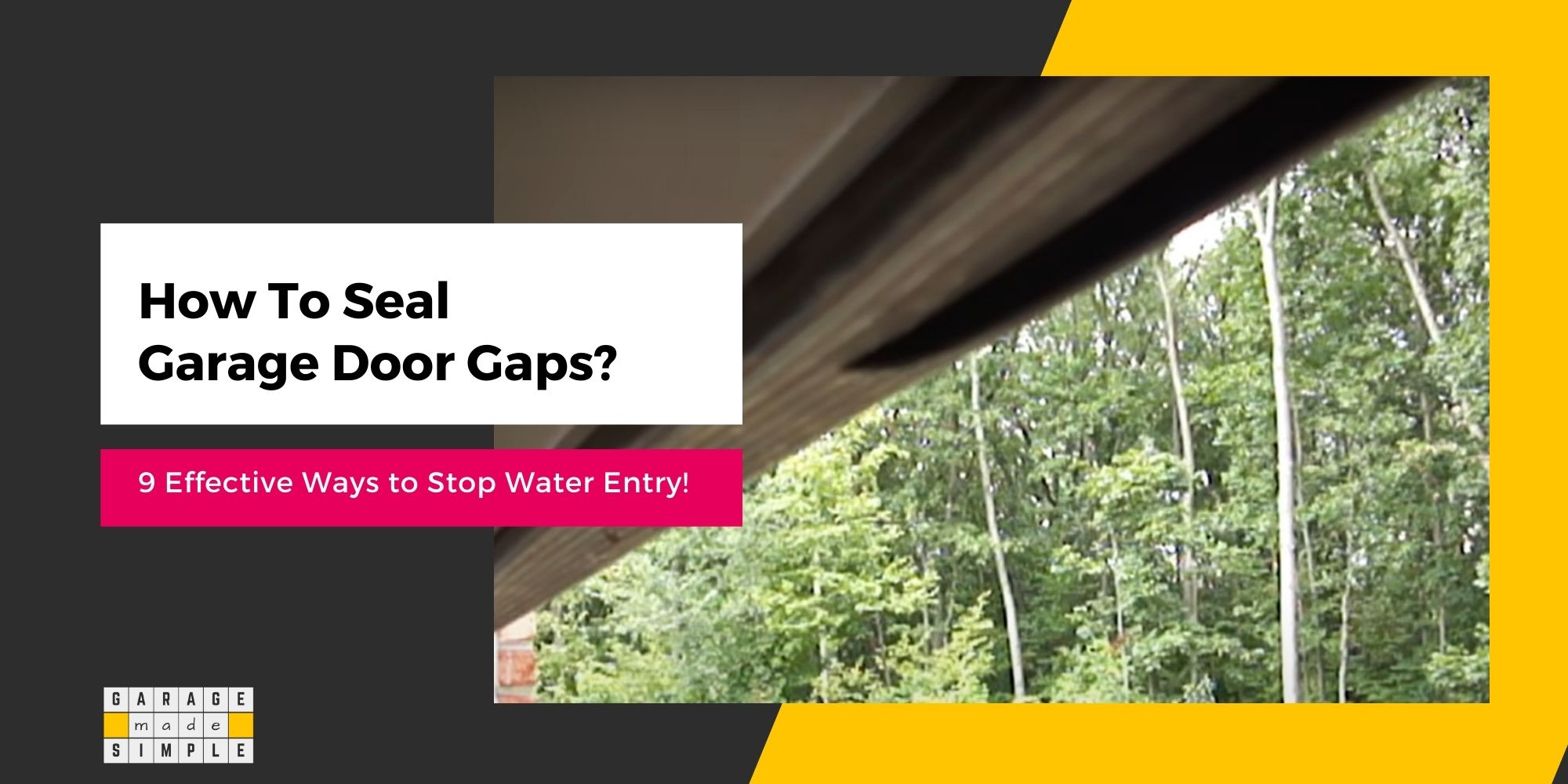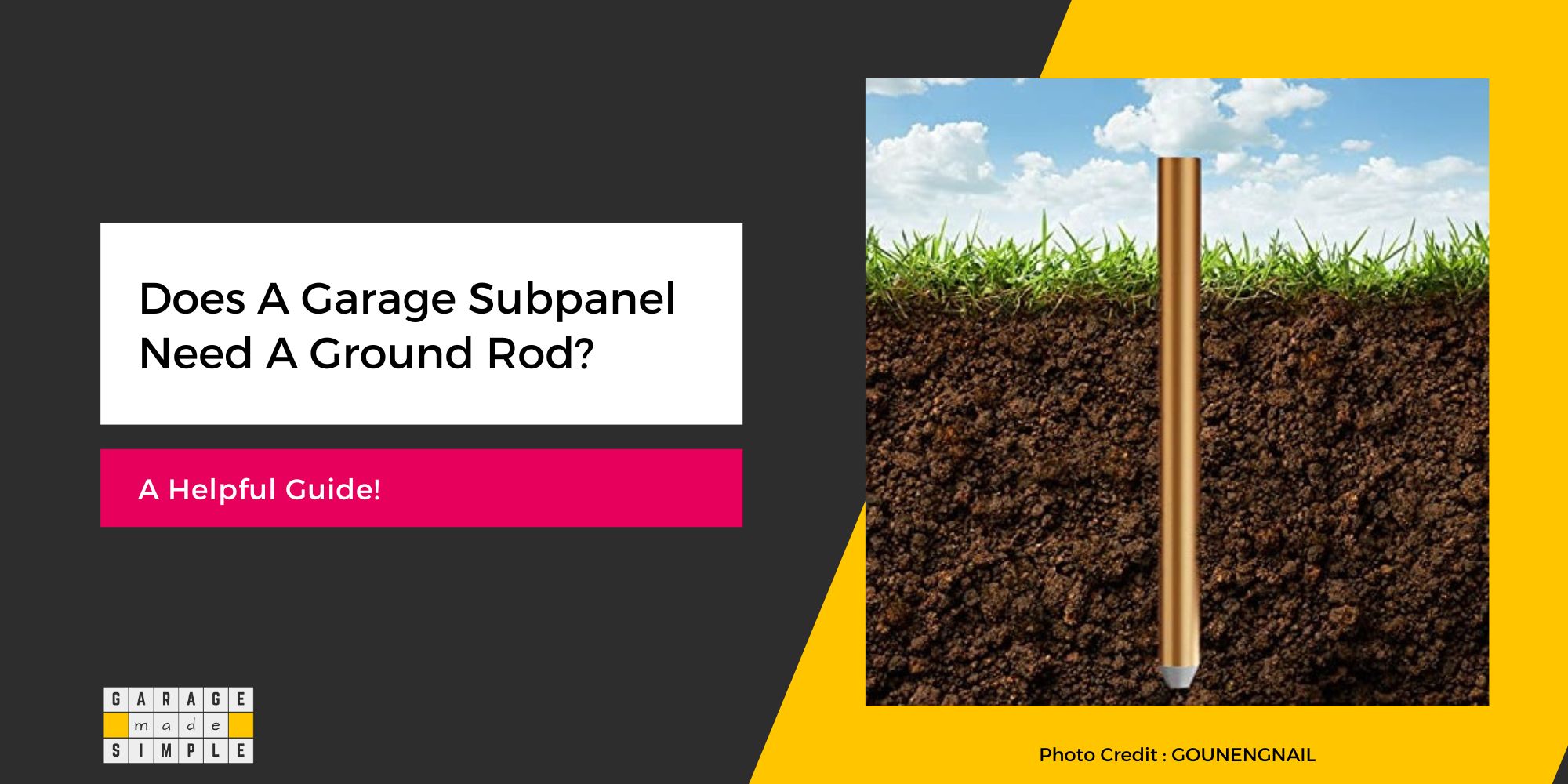9 Step Easy Guide to Driveway Trench Drain Installation
garagemadesimple.com is a participant in the Amazon Services LLC Associates Program, an affiliate advertising program designed to provide a means for sites to earn advertising fees by advertising and linking to Amazon.com . The website is also an affiliate of a few other brands.
How Do You Do Driveway Trench Drain Installation?
Does water get into your garage through the garage door, when it rains hard? A Driveway Trench Drain Installation, in front of the garage door can trap and divert this water. So, can you do a driveway trench drain installation yourself?
If you have some DIY skills then it is possible to do a driveway trench drain installation yourself. Here is an easy to follow 9 step guide on how to do it.
Summary of the 9 Step Guide for Driveway Trench Drain Installation
| Step | Description |
|---|---|
| 1 | Determine the location of the driveway trench drain. |
| 2 | Gather all tools and supplies. |
| 3 | Pre-assemble the driveway trench drain kit. |
| 4 | Excavate and form the driveway trench. |
| 5 | Secure the trench drain assembly. |
| 6 | Connect the driveway drain to the stormwater system. |
| 7 | Pour concrete and finish the surface. |
| 8 | Install the grates over the trench drain channels. |
| 9 | Test the drain and clean up the worksite. |
Step 1 – Determine the Location of the Driveway Trench Drain
Determine the exact location where the Trench Drain will be installed. Does your garage have a concrete apron? Then the joint between the apron and the driveway is the ideal place.
If there is no apron then the joint between the garage floor slab and the driveway, just outside the garage door is the right place.
Before you start digging, do ensure that the chosen location does not have any existing electrical wiring, communication cables, gas pipes or plumbing (water supply, drains).
Step 2 – Gather all Tools & Supplies
Ensure that you have all the tools required. You will need
- Shovel & Pick for digging. You might need a Concrete Saw & a Trench Digger too
- Hack Saw, Utility Knife, Pliers & Tie Wire, Hammer & Nails for cutting and securing
- Measuring Tape, Permanent Marker, Masking Tape, Waterproof Silicone
Next ensure that you have the right length and quantity of the supplies required
- Trench Drain Kit (Sections + End Caps)
- PVC Drain Pipe with Elbows
- Forming Lumber
- Concrete and Rebars
Step 3 – Pre-assemble the Driveway Trench Drain Kit
Pre-assemble your Trench Drain Kit and Drain Pipes (without applying the silicone at this stage) and lay it out on the installation location.
This way you are sure that all the measurements are correct. Cut and adjust lengths if required.
Step 4 – Excavate and Form the Driveway Trench
For Driveway Trench Drain Installation, you will need to cut a channel in the driveway in which to put in the “Forming”.
The form is to ensure that the Trench Drain is encapsulated in 4” of concrete all around. The concrete thickness will take the load of your cars.
The dimensions of the Forming should be
- Length – Trench Drain length + 4” on each end for the concrete
- Width – Trench Drain width + 4” on each side for the concrete
- Depth – Trench Drain height + 4” below the drain for the concrete
Prepare the Form as per the above dimensions using the lumber, and place it in the hole you just dug.
Dig out the trench for the drain pipe from the Trench Drain to the discharge point on the street. The drain pipe should slope at 1%, that is 1” of fall for every 8’ of drain pipe.
Step 5 – Securing the Assembly
Snap the sections of the Trench Drain. Secure the end caps using silicone. Secure the PVC elbow and drain pipe using silicone.
Next place the complete assembly in the trench. The Trench Drain can be positioned in the desired spot either by suspending it or by supporting it on rebars.
TIP: Keep the top of the Trench Drain ⅛” – ¼” below the driveway and garage apron. This will reduce the impact on the Trench Drain when cars drive over it.
Step 6 – Connect the Driveway Drain to Stormwater Drainage System
Connect the driveway trench drain with the existing or newly designed stormwater drainage system.
This usually involves connecting the trench drain to a pipe that directs water away from the garage and driveway, ideally towards the stormwater drains.
You could also drain to daylight if you have the necessary space and permits.
Step 7 – Pouring Concrete & Finishing
Before pouring the concrete, cover the grates with masking tape. Now you are ready to pour the concrete.
Carefully pour concrete or polymer concrete around the trench drain channels and over the top of them to secure them in place.
Ensure proper compaction of the concrete to prevent settling and to provide a stable surface for the driveway.
After pouring the concrete, remove the masking tape and Finish the concrete so that it is level with the top of the Trench Drain.
Step 8 – Grate Installation
Place the grates over the trench drain channels. Choose grates that can handle the weight of vehicles and are visually appealing.
The grates should allow water to flow freely while preventing debris from clogging the drainage system.

Step 9 – Testing and Cleanup
Perform a water test to ensure that the trench drain is effectively collecting and draining water away from the garage and driveway.
Make any necessary adjustments to the system if required. Finally, clean up the worksite, removing any debris or excess materials.
Where Do You Put a Driveway Trench Drain?
By code, the concrete garage slab should slope towards the garage door. If the driveway is sloping towards the garage door too, then the point where the garage concrete apron meets the driveway is the lowest point.
This meeting point between the garage concrete apron and the driveway is the best place for a Driveway Trench Drain Installation.
A Driveway Trench Drain runs parallel to the garage door and across the driveway. The Driveway Trench Drain, also known as a driveway channel drain, has grates on top to collect the rainwater flowing down, towards it.
The water drops into a channel with a U-shaped cross section. The collected water is diverted away from the front of the garage using drain pipes.
A trench drain at the point where the driveway and the garage floor or the garage apron meet is quite often the lowest point. This is close to or the exact location of the garage door. The garage floor usually slopes towards the garage door as per code and the driveway could be sloping towards the garage.
What is a Trench Drain System?
So what exactly is a Trench Drain System? You have seen gutters on roof edges. They are used to collect the rainwater falling on the roof and direct it towards the downspout and ultimately to the storm water drain on the street.
A Trench Drain is essentially a gutter that is buried in the ground. It is used to collect the rainwater falling on the driveway or any impervious surface and direct it towards the storm water drain on the street.
Typically, Trench Drains need to be installed in areas which will have vehicular or foot traffic such as driveways, parking lots, patios, etc. Trench Drains will also have a grate on top to stop leaves and other debris from getting in and clogging it.
You may be wondering if French Drains and Trench Drains are the same thing. They are similar but not the same. French Drains should not be confused with Trench Drains. They may seem to be doing the same thing but there are subtle differences.
French Drain vs Trench Drain
A French Drain, like a Trench Drain, is also buried in the ground.
A French Drain collects underground or subsoil water. The objective is to prevent the subsoil water from leaking through the building foundation when the water table rises.
A French Drain is a type of Weeping Tile Drain, but on the building exterior. It is usually a perimeter drain, so that it can prevent water seepage in the foundation all around.
A Trench Drain collects surface water from rain or snowmelt. A Trench Drain is installed to prevent certain areas from getting flooded. A Trench Drain is generally installed across a sloping surface such as a driveway or yard.
The top of a French Drain is below ground level but the top of a Trench Drain is at ground level.
A Trench Drain is also called a Channel Drain. The channel however, should refer only to the U shaped linear trough. The complete assembly of the channel, grates, endcaps, end outlets, catch basins and the concrete holding all of these is the Trench Drain System.
How To Select the Right Driveway Trench Drain?
Before you start your Driveway Trench Drain Installation, you have to select the driveway drain system that will be right for your needs. To do this you must consider the following factors:
How do you Size a Driveway Trench Drain?
Sizing a Driveway Trench Drain is the process of determining the channel dimensions that will get the job done.
LENGTH: The total length of the channel should be around the same as the garage door width. It could be shorter or longer than the driveway width, but not by too much. Channel sections come in standard lengths of around 39″ (1 meter). Several sections can be snapped together to give the required length.
WIDTH: Channels come in standard widths. The channel width can range from 1” (for a micro channel or slot drain) to 12”. The size that is best for you will depend on the maximum amount of water flow that you are expecting.
DEPTH: The depth of the channel is related to the width and the maximum amount of water flow that you are expecting.
How do you Calculate Drain Flow Rate?
The required trench drain flow rate (in gallons per minute) depends on:
- Driveway Area (in square feet)
- Rainfall Rate (in inches per hour)
- Surface Type (Asphalt & Concrete Driveway have 100% runoff)
- Driveway slope towards the garage
There are online calculators to make your job easier. You can try out https://www.ndspro.com/tools-and-calculators/ez-drain-calculator
What are Driveway Trench Drains Made of?
A variety of materials can be used to make the channel and other fitting of a Driveway Trench Drain System. The choice of material often depends on the Trench Drain capacity and the traffic load on it.
Generally speaking
- Small capacity Trench Drains designed for light loads such as foot traffic are made from PVC
- Medium capacity Trench Drains designed for medium loads such as passenger cars are usually made from Polypropylene. Other materials such as stainless steel, cast iron etc. may also be used
- Large capacity Trench Drains designed for heavy loads such as trucks or camper vans are likely to use fiber reinforced concrete
Most manufacturers offer online Channel Drain Selectors. Check out https://www.ndspro.com/choose-the-right-channel-drain.html for example.
Do Driveway Trench Drains need to be Sloped?
Driveway Trench Drains come either with a 0.5% slope or a neutral slope. A slope of 0.5% translates to a drop of 1” for a 16’ of Trench Drain.
Driveway Trench Drain Installation does not require the Trench Drain to have a slope as the length is relatively short. Trench Drain with a neutral slope is a lot easier to assemble.
You should, of course, provide a slope of 1% in the drain pipe that will carry the water from the Trench Drain to the discharge point on the street. If the street is 100 feet away from the garage then the drain pipe will need to drop by 1 foot.
Recommended Driveway Trench Drain Kit
I recommend using the following products that can be ordered from Amazon using the links below:
NDS Channel Drain Kit
Key Features:
- The 5 in. Pro Series Channel Drain Kit with Deep Profile Channel is ideal for draining moderate flows from hardscape surfaces such as driveways
- Channel sections connect together with interlocking joints. Connect 5 sections for a total length of over 16′
- Handles 72 GPM per ft. flow rate. 23.5 sq. in. per linear ft. open surface area.
- Rated for NDS Class B Loads (up to 175 psi) when properly installed—recommended for medium-duty pneumatic tire traffic, autos, and light trucks at speeds less than 20 mph
- ADA compliant
Thank you very much for reading the post. I do hope you found it informative and useful.






